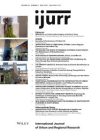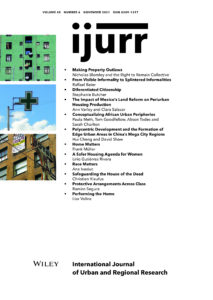This essay develops the concept of protective arrangements (a socio‐material relationship between house architecture, objects and human practices) in order to develop a new understanding of urban social segregation. Drawing from ethnographic fieldwork in La Plata (Argentina) I compare the protective arrangements of lower and upper middle‐class residents against the background of the commonly sensed need to self‐organize protection. While in the gated communities of the upper‐middle class walls and fences enclose an ‘open interior space’, members of the upper‐middle class who live in or close to the city centre protect their homes with individual security systems. In contrast, people at the poorer end of society attune their repertoires of protection towards the constant threat of eviction and burglary with dogs and improvised fences and by guaranteeing the permanent presence in the home of at least one household member. The analysis of these strategies at the house scale shows an increasing process of socio‐spatial fragmentation in the city as a product of the materialization of discursive‐material practices deployed in search of protection.

